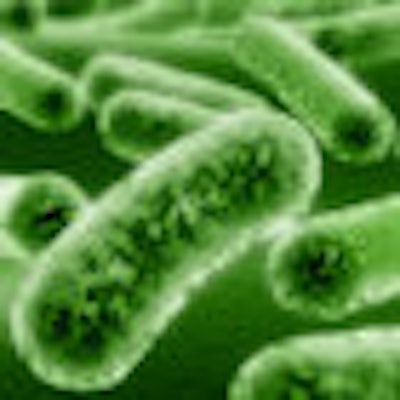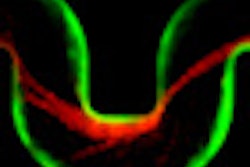
Biofilms, beware! That was the central message of the talk by endodontic specialist Robert Goldberg, D.D.S., at the Chicago Dental Society Midwinter Meeting last week.
In his presentation, "A Cornucopia of Clinical Conundrums Revisited," Dr. Goldberg, a dentist who practices in Buffalo Grove, IL, focused on the microorganisms that can invade the oral cavity and wreak all sorts of havoc. Biofilms are particularly bothersome because they can stick to the surface of virtually anything. And once the first bacteria sticks, others stick to them, eventually forming a "village" that can be nearly impossible to eradicate, he said.
"A biofilm is a structured community of microorganisms encapsulated in a self-developed polymeric matrix," said Dr. Goldberg, who is also an assistant clinical professor of endodontics at the University of Illinois at Chicago College of Dentistry. "When bacteria are organized in biofilms, they produce substances that individual bacteria cannot produce alone, and the body cannot remove them."
In fact, these communities of bacteria begin to emit pheromones that can transfer information from one to another and help the community survive.
"Say there is a rapid pH change [from antibiotics]," Dr. Goldberg said. "The biofilm will signal the bacteria to shut down until the pH changes back to a more receptive state. This way, the bacteria can survive and then thrive again later on."
What can be done to combat these sneaky creatures during endodontic procedures? Dr. Goldberg emphasized three things:
- Eliminate the microorganisms from the root canal system.
- Remove pulp tissue that may support microbial growth. "This is the food supply," he said. "If you can't kill the bacteria, remove the food supply."
- Avoid forcing debris beyond the apical foramen to avoid sustaining existing inflammation.
Isolating the problem tooth is critical to eliminating microorganisms from the root canal system, Dr. Goldberg added. He is a huge proponent of the rubber dam, which not only protects the patient from swallowing and potentially aspirating instruments or irrigation solutions but reduces the risk of cross-contamination and contamination of the pulp space.
Dr. Goldberg also recommends the use of visual aids such as magnified loupes, fiberoptic headlamps, and surgical operating microscopes to enhance the ability to clean out a tooth. While not warranted in every case, he suggested that a microscope, for example, can help you spot food debris you wouldn't see otherwise, and also more accurately determine the anatomy of a tooth.
"The surgical operating microscope allows you to be much more conservative because you can see better what is going on with a tooth and adjust the treatment accordingly," he said.
Irrigation is critical
But perhaps the most important tool in the fight against biofilms is irrigation, according to Dr. Goldberg. Irrigation is necessary to suspend and rinse away debris, serve as a canal lubricant, and remove the smear layer that forms on uninstrumented dentin surfaces, he said.
In fact, nearly 30 years ago, Byström and Sundqvist demonstrated that irrigating instrumentation alone reduced bacterial load 100- to 1,000-fold, Dr. Goldberg noted (Scandinavian Journal of Dental Research, 1981, Vol. 89:4, pp. 321-328). That same research found that they were unable to achieve a bacteria-free canal without the addition of an antibacterial irrigant -- specifically NaOCI (sodium hypochlorite).
Today, NaOCI remains the "irrigant of choice" for endodontists, Dr. Goldberg noted.
"It is the only one shown to penetrate and destroy biofilms, and the only one that can dissolve tissue," he said, adding that he favors 6% over 3% solution. "We're waging war against microbes, and I want to drop an atomic bomb."
His personal irrigation technique is a five-step process:
- Irrigate thoroughly with NaOCI.
- Evacuate the NaOCI.
- Syringe EDTA (ethylenediaminetetraacetic acid) into the canal for one minute (he prefers the liquid to the gel because it doesn't bind up the instrumentation).
- Evacuate the EDTA.
- Five-minute final rinse with CHX (chlorhexidine gluconate).
Dr. Goldberg also recommended using sonic or ultrasonic activation to remove bacteria and their byproducts, pulp tissue, and the smear layer on instrumentation because it can dislodge debris in the canal and more efficiently direct the irrigant into complex root anatomy.
"One of the major shortcomings in current root canal disinfection is the inability to eliminate bacteria from anatomical complexities and deeper portions of dentinal tubules," he said. Clinical studies have reported greater canal and isthmus cleanliness when ultrasonic activation has been used following canal preparation, especially in cases with complex anatomy such as a C-shaped canal, he added.
A positive side-effect of ultrasonic activation is that it can produce heat, making the NaOCI irrigant even more effective, Dr. Goldberg noted.
"Studies have shown that warming NaOCI 20° or so will result in the bacteria being killed more quickly," he said.
Looking ahead, Dr. Goldberg believes that low-power lasers may also become a useful bacteria-fighting tool. He cited a 2008 study that found that using diode-laser photodynamic therapy in conjunction with a methylene blue photosensitizer in the root canals of 120 extracted teeth resulted in an 80% reduction of colony-forming unit counts of bacteria (Journal of Endodontics, June 2008, Vol. 34:6, pp. 728-734). A more recent study achieved even better results, he noted (J Endod, September 2008, Vol. 34:9, pp. 1119-1123).
"This is cool stuff," he concluded.
Copyright © 2009 DrBicuspid.com



















